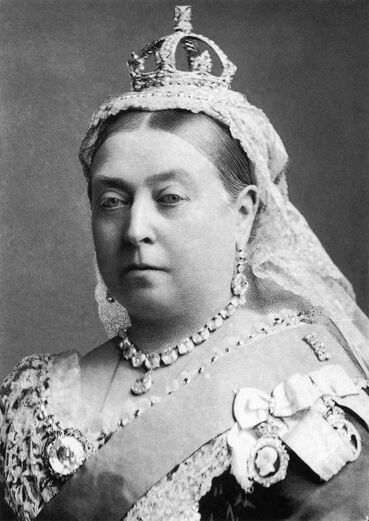In January of 1901, the city of Victoria in British Columbia, was contemplating the New Year with optimism. A new year was welcomed by the ringing of bells and the explosion of fireworks.
But on January 19th some disturbing news reached the city. The Colonist reported that Her Majesty Queen Victoria, who was highly esteemed by many (even in far-off places like her namesake city in Canada’s far West,) was suffering “from nervous strain and was in need of rest.” “No cause for alarm” said the reports, despite the Queen’s advanced age. Within two days, however, it was a vastly different story. Her Majesty’s condition was reported as “grave” and in the following edition of the newspaper, in typical dramatic Victorian prose, a heading stated that “Her life is fast ebbing away”. The next day the Colonist newspaper with columns edged in black, declared that “Victoria the Good had passed away”.
It was then January 22nd, 1901, and with those tragic words, the city was plunged into mourning with a cloud of despair hanging over everyone. It was the end of an era—The Victorian Era. The grief felt by Queen Victoria’s subjects around the world was heartfelt and real. It was after all a time in history when patriotism ran high and emotions were inspired by genuine love for “Queen and Country”.
The Queen was praised and eulogized by everyone. Love and adoration poured from her subjects of all classes who appeared to consider her almost Saint-like. Most of them had never known another monarch as she had reigned since June of 1837, a period of 64 years, and even though she had spent much of her time since the death of her Consort, Prince Albert in 1861, dressed in mourning and hidden from public scrutiny, she had still somehow managed to instill in the hearts of her subjects a love and adoration second to none. The symbol of a Queen, who was considered to be morally good, had served as a stable, secure influence for all her subjects.
But here are a few facts about the Queen that maybe you didn’t know:
- She was only 5 feet tall and in later years was said to have “an impressive girth”. In 2009, a pair of bloomers and a nightgown belonging to Victoria were auctioned off and showed a 50-inch waistband.
- She was the one who proposed marriage to Prince Albert. As Queen he was not allowed to propose to her. Their marriage was one of true love and she once wrote in her dairy “without him everything loses its interest”. Although she admitted she disliked pregnancy and childbirth and referred to it as “the shadow-side of marriage,” she and Albert produced nine children.
- She was the only child of Edward, duke of Kent, who was the fourth son of King George III. Victoria’s father died in 1820 when she was less than a year old and she was raised at Kensington Palace by her domineering mother. She later became estranged from her mother who had been influenced by her advisor Sir John Conroy for years to isolate Victoria from other people. She later relied instead on the advice of her uncle Leopold and her governess Louise Lehzen. Once she became Queen when she was eighteen, Victoria moved to Buckingham Palace and banished her mother to a separate set of apartments. Victoria was the first royal to live at Buckingham Palace.
- She was also the first known carrier of the disease called hemophilia, a blood clotting ailment, which became known as the “Royal disease.”
- Despite her subjects’ great love for their queen, there were at least six assassination attempts on her life during her reign—most while riding in her carriage.
- Victoria had been christened Alexandrina Victoria but preferred to use her second name or her nickname “Drina.”
- She was multilingual, fluently speaking both English and German. She also studied French, Italian and Latin. She later learnt a few phrases of Hindustani taught to her by her attendant Abdul Karim.
- She was the one who began the popular tradition of brides wearing white dresses for their weddings, and popularized the custom of Christmas trees in 1848 first introduced by Prince Albert.
- Victoria and Albert’s nine children married into several other European monarchies and gave Victoria 42 grandchildren.
- She was the first monarch to ride in a train and was the second-longest reigning British monarch.
- Today her name lives on around the world in mountains, lakes and cities across her vast Empire even though she never visited those places, including the city of Victoria in British Columbia, Canada.
The legacy Queen Victoria left behind is incredible for a woman who was so small in stature but so strong in courage. She had managed to create an Era connected with high morals and standards second to none—at least superficially!
Her eldest son then became King Edward VII and the Edwardian Era began. He reigned for only nine years until his own death in May of 1910.



